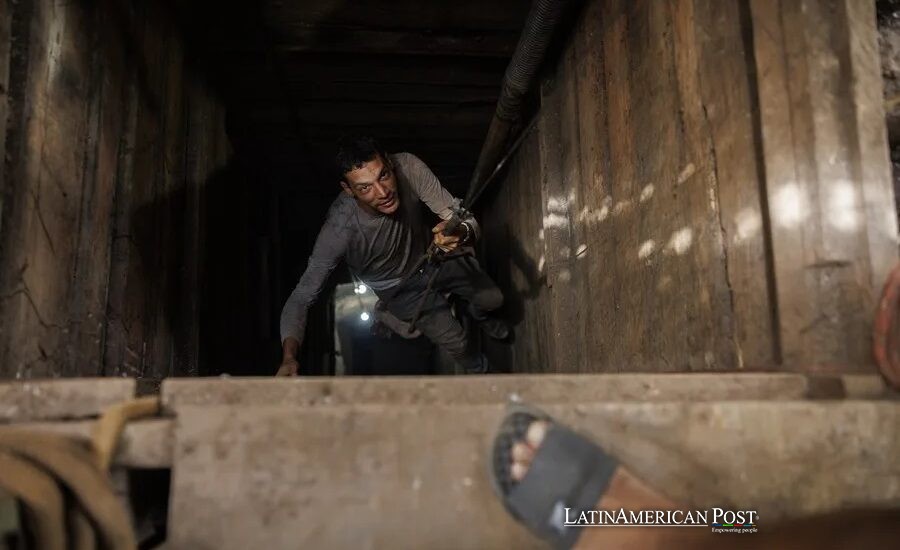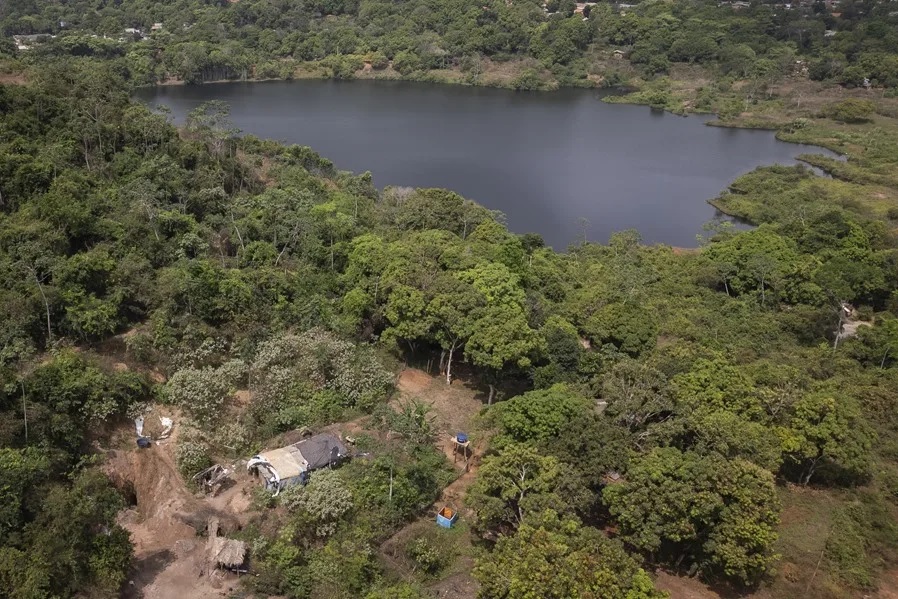Brazil’s Sleeping Giant: Serra Pelada Stirs Again as Gold Fever Returns

Brazil’s most infamous open-pit gold mine, Serra Pelada, is stirring once more with dreams of fortune and warnings of ruin. Aging garimpeiros, feuding cooperatives, and restless speculators are testing Pará’s limits just months before COP30 shines a global light on Brazil’s stewardship of the Amazon.
The Pit That Refuses to Sleep
From above, Serra Pelada looks like a wound that healed wrong—an enormous pit, now filled with opaque green water, glimmering under the Pará sun. The surface looks calm. It isn’t. Beneath that quiet, an obsession still simmers.
“We are three meters from the gold,” insisted Chico Osório, eyes fixed on the mouth of a clandestine shaft he and a handful of men have dug near the old crater. He’s sixty-two now, leaning on a crutch. The decades have bent him, but not broken him. He still lowers himself by a fraying cable and a homemade swing to “check the advance,” as he told EFE.
Osório is one of the last witnesses to Brazil’s most fevered gold rush. He arrived in 1982, one of 80,000 dreamers who turned this hill into a living sculpture of desperation—thousands of bodies climbing and clawing for the yellow glint that meant salvation or death. He remembers hauling fifty-kilogram sacks up the pit’s “Adiós, mamita” staircase, a climb so steep that men often died before reaching the rim. He claims he personally helped extract nearly 700 kilograms of gold.
The government shut the mine in 1992, citing falling yields and safety hazards. Osório’s fortune disappeared when his bank collapsed. The airplanes he bought are long gone. What remains is the ache for another chance, the belief that one more descent will redeem everything. “The hardest part is reaching the gold; after that, money and good equipment will not be lacking,” he said, his voice equal parts pride and prayer.
From a distance, the pit looks dormant. Up close, it feels like a heartbeat that refuses to stop.
A Cooperative at War With Itself
Serra Pelada’s afterlife is a mix of nostalgia and chaos. The town around the crater is not abandoned; it is suspended, a purgatory of people waiting for something to restart. Outside the cooperative’s headquarters, old miners play dominoes under faded tarps while lawyers and rivals argue over who’s in charge.
Deuzita Rodrigues, elected cooperative president earlier this year, was swiftly ousted by internal opponents. She fought back in court, and in August, a judge reinstated her. Every legal victory feels hollow when the cooperative’s credibility is so shredded. Years of corruption allegations, political interference, and broken promises have left a $10-million labor debt and frozen environmental permits.
Rodrigues told EFE she still hopes to revive operations through a partnership with a private company willing to mine the cooperative’s remaining 100 hectares. She insists it will follow environmental law. But even she admits that the real obstacle isn’t legal—it’s moral. “No judge can restore trust,” she said.
Serra Pelada can’t enter the modern era with the same habits that wrecked it. The debts, the backroom deals, the nostalgia for chaos—those are its real poisons. Without transparency and accountability, the promise of renewal is just another mirage.
The irony is painful: the cooperative was meant to save the miners from exploitation by creating a collective future. Instead, it turned into a courtroom battlefield, a reminder that democracy without discipline is as fragile as the clay that once crumbled beneath their feet.
Illegal Shafts, Liquid Mercury
While the cooperative bickers, the impatient are taking matters into their own hands. Old miners, some with grandchildren in tow, are reopening clandestine pits in the jungle around the old site. The tools are primitive: shovels, headlamps, pulleys, and plates brushed with mercury.
Mercury binds gold dust from the mud—a simple trick with catastrophic consequences. Osório pointed proudly to a glistening silver plate streaked with tiny yellow specks. “Those shining points—do you see them? That is gold,” he told EFE.
What he didn’t say is that mercury never disappears. It sinks into soil, seeps into rivers, poisons fish, and lodges in the bodies of the people who eat them. It is a slow, invisible violence that masquerades as prosperity until the sickness sets in.
Police raids occasionally break up illegal mining camps, but they are whack-a-mole operations. As long as there are buyers, there will be diggers. One trader in town admitted to EFE he still buys about 200 grams of gold per week, no questions asked.
That small trade speaks to a larger contradiction haunting Pará. The state markets itself as the future host of COP30, the climate summit meant to showcase Brazil’s green transformation. Yet just beyond the city limits, the old habits persist—garimpo pits, unlicensed dredges, the shimmer of mercury in backwater streams. Pará’s economy still leans on the same extraction it claims to be outgrowing.
To stand before the world in Belém next year and declare a new environmental era, Brazil must first reckon with the ghosts in its own backyard.

EFE/ Isaac Fontana
What Responsibility Looks Like in Pará
There may still be gold beneath Serra Pelada. That doesn’t mean reopening the pit is destiny—or wisdom. The difference between history repeating and history healing lies in how the state and the miners choose to act now.
First, the cooperative must do what it has long avoided: clean its books. Pay the debts. Publish accounts. Show the workers and the world where every real goes. Without transparency, no legitimate investor will touch Serra Pelada, and no regulator will approve it.
Second, any sanctioned operation must commit to mercury-free processing from day one. The technology exists—gravimetric circuits, closed-loop cyanidation, and newer non-toxic reagents can recover gold safely. What’s missing is political will.
Third, a portion of every gram extracted must fund restoration—reforestation of degraded land, water treatment, and health monitoring for nearby communities. The miners who once dug holes could be paid to plant trees instead. Redemption can be literal work.
Finally, the state must draw a clear moral line. Illegal garimpo isn’t a romantic hustle; it’s environmental vandalism. Pará’s government has to combine fast, fair permitting for legal cooperatives with relentless enforcement against clandestine ones. The law should be a door, not a revolving gate.
This isn’t about erasing the miners’ past; it’s about giving them a future that doesn’t poison their children. The gold rush made Serra Pelada famous—but also fragile. If another chapter is written, it must read differently: no more mercury plates glinting in the dark, no more endless domino games while leaders squabble, no more excuses disguised as nostalgia.
When COP30 opens, the world will ask whether the Brazilian Amazon can be both engine and guardian—productive without being predatory. Serra Pelada is the test case with a name that still makes Brazilians wince.
Also Read: Colombia Reclaims the Sinú: How Montería Turned Its River Into Its Future
Osório swears he is only three meters from gold. Perhaps he is. But Brazil, standing on the edge of its own contradictions, is three steps from a greater decision: whether it will finally prove that the age of reckless garimpo is over—or admit that the pit that refuses to sleep also refuses to learn.





